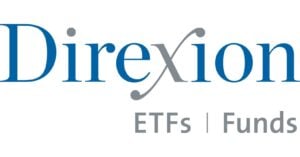We adhere to strict standards of editorial integrity to help you make decisions with confidence. Some or all links contained within this article are paid links.
Are you financially honest with yourself?
This question is at the heart of Washington Post personal finance columnist Michelle Singletary’s latest money column. In it, she lays out the top five financial lies people tell themselves, with a nod to Jack Nicholson’s iconic role in A Few Good Men: You can’t handle the truth.
“Many people unintentionally misrepresent their spending, naively believing their own narratives about where their money goes until they are confronted with the undeniable evidence of their bank statements,” Singletary wrote.
Don’t miss
- Thanks to Jeff Bezos, you can now become a landlord for as little as $100 — and no, you don’t have to deal with tenants or fix freezers. Here’s how
- I’m 49 years old and have nothing saved for retirement — what should I do? Don’t panic. Here are 6 of the easiest ways you can catch up (and fast)
- Robert Kiyosaki warns of a ‘Greater Depression’ coming to the US — with millions of Americans going poor. But he says these 2 ‘easy-money’ assets will bring in ‘great wealth’. How to get in now
She notes that this “financial amnesia” tends to happen because someone doesn’t actually have a budget. While they like to think they aren’t spending much on evenings out or Uber Eats, they aren’t regularly tracking how much they spend on these things.
So, what are the five lies she hears the most?
Lie #1: I have a budget
Some people think they have a budget because they decided on a ballpark number for food, clothes and gifts each month — but they never actually track their spending.
Mental “tracking” isn’t a budget. If you take time to write down exactly how much you spent on Uber Eats last month, you’ll probably be shocked.
Seeing the numbers in front of you is the only way to know how much you’re actually spending. Once you realize your restaurant budget is double what you thought it was, you’ll have more motivation to stick with a budget.
Budgeting apps like Monarch Money can help you quickly set up a budget — since you can track spending, account balances, transactions and investments all in one place. You can also integrate this info with your partner’s finances at no extra cost, making it a simple way for couples to manage finances together.
They currently offer a seven-day free trial to see if Monarch Money gives you a new perspective on your budget.
If you find the app helpful, for a limited time you can get 50% off your first year with code MONARCHVIP.
Read more: Want an extra $1,300,000 when you retire? Dave Ramsey says this 7-step plan ‘works every single time’ to kill debt, get rich in America — and that ‘anyone’ can do it
Lie #2: I have an emergency fund
Having a few thousand dollars floating around in your bank after payday might feel like an emergency fund, but if you don’t have a separate savings account set up and funded as your designated emergency fund — meaning you only touch it if an actual financial emergency occurs — it’s not actually for emergencies.
“People will swear they have a rainy-day fund, but they raid it so regularly that it becomes just another spending account,” Singletary wrote.
The ideal emergency fund should contain at least six months of your basic living expenses (housing, food, transportation, bills). This is a lot of money for most people, so you’ll want the money in this account earning interest to keep up with inflation. A high-yield savings account can ensure your money still grows while avoiding the market fluctuations that come with investing.
If you’re looking for a great high-yield savings account to park your emergency fund in, Wealthfront currently offers 4% interest on their cash account. At nearly ten times the national average, it’s a reliable home for long-term savings.
Even better, if you refer a friend to Wealthfront after opening a new account, you can also boost your APY to 4.5% for three months.
Wealthfront accounts are also FDIC insured for up to $8 million for individuals, and $16 million if shared. With over 1 million users and 15 years of experience, Wealthfront can keep your cash secure while it works for you.
Fund your account with $500 or more today to get a $30 bonus.
Lie #3: I manage my spending better with a credit card
This lie is easy to sell yourself if you’ve bought into the noise around maximizing credit card rewards. Wanting to use your card for everything so you can easily track spending makes sense, but it might be the reason you blow past your budget every month.
According to Singletary, “research reveals that paying with plastic — credit or debit — increases how much people spend.”
She points out that in 2016 the Federal Reserve Bank of Boston found that consumers spend an average of $112 when using credit cards, but just $22 when using cash.
If you find it difficult to stop overspending, consider cutting the credit card and trying out cash only (where possible) for the next month. Compare your spending to the previous month to see if it made a significant impact.
If you’re looking to use your money in a more productive way, consider trying Acorns, an investment platform that automatically invests spare change from your everyday purchases into a diversified portfolio of ETFs.
For instance, if you buy a coffee for $3.25, Acorns will round it up to $4 and invest the change in a diversified investment portfolio. So a $3.25 purchase automatically becomes a 75-cent investment in your future.
Sign up today to receive a $20 bonus investment when you set up a recurring deposit.
Lie #4: I don’t dine out a lot
Restaurant bills can add up much faster than some might realize. This is especially true in the age of food delivery apps, when your favorite meal is just a few taps away from your door.
“The average American household spent nearly $4,000 on food away from home in 2023, an 8 percent increase from the previous year,” Singletary writes.
If you’re not a fan of cooking, be sure to track exactly how much you are spending on food someone else prepared for you each month.
But if dining out is something you enjoy and don’t necessarily want to cut back on, you can still optimize this spending using a platform like Upside, an app that provides cash-back on gas, groceries, dining and more.
It will even give you up to 25 cents per gallon back on gas at the pump. You can also get a bonus 25 cents off per gallon when you use code MONEYWISE25 on your first transaction when you sign up.
Just claim the offer in-app, shop as usual, then purchase and pay with a linked credit or debit card. Simply cash out your earnings directly to your bank account, PayPal or a gift card.
Lie #5: I don’t understand why I’m always broke
If you’ve caught yourself saying this before, you need a financial audit. Perhaps your money situation changed recently, but your spending habits didn’t. It’s time to get real about your income and expenses, so you can take action.
“If you genuinely reflected on your spending habits and combed through your bank or credit union statements, you’d quickly uncover the reason your budget isn’t balancing,” Singletary wrote.
Be ruthless about your spending and find ways to cut costs.
For example, insurance providers tend to increase prices over time, making that once great deal you had on car insurance suddenly expensive. Take stock of how much you are paying, and see if you can find a better deal.
You can save on car insurance using aggregators like OfficialCarInsurance.com — just type in your age, zip code and current car insurance provider and you’ll instantly be provided with a selection of quotes to compare.
Providers include household names like GEICO, State Farm and Allstate. Depending on factors like your driving history and location, you can secure rates as low as $29 per month.
And if you’re paying too much for home insurance? OfficialHomeInsurance.com can help.
Simply input a few data points to be provided with a variety of insurance quotes — you could save an average of $482 this year alone.
What to read next
- You don’t have to be a millionaire to gain access to this $1B private real estate fund. In fact, you can get started with as little as $10 — here’s how
- Here are 5 ‘must have’ items that Americans (almost) always overpay for — and very quickly regret. How many are hurting you?
- Accredited investors can now buy into this $22 trillion asset class once reserved for elites – and become the landlord of Walmart, Whole Foods or Kroger without lifting a finger. Here’s how
- Rich, young Americans are ditching the stormy stock market — here are the alternative assets they’re banking on instead
Stay in the know. Join 200,000+ readers and get the best of Moneywise sent straight to your inbox every week for free. Subscribe now.
This article provides information only and should not be construed as advice. It is provided without warranty of any kind.


